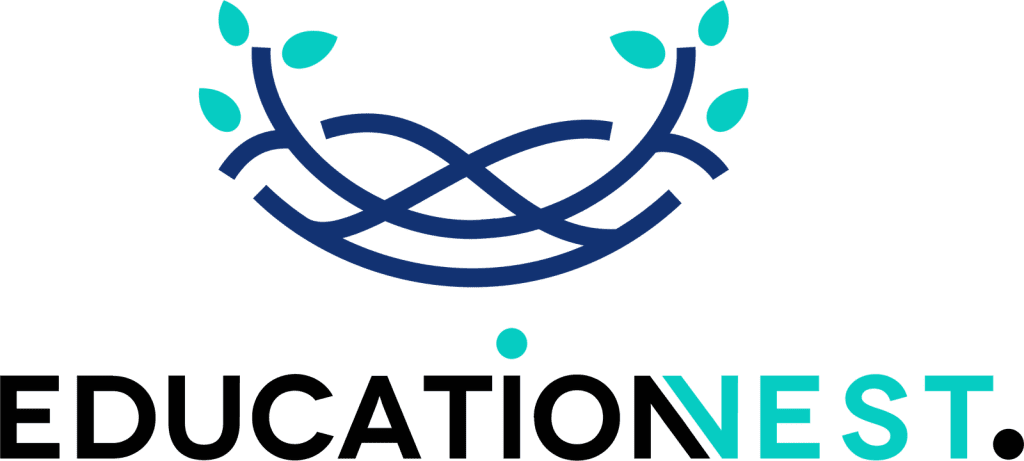Discover the importance of micro teaching for educators. Learn core skills & methods to enhance classroom effectiveness in short, focused sessions. Boost teaching success!
A new manager stumbles through their first team presentation, forgetting key points and losing their audience within minutes. Sound familiar? What if I told you there’s a proven teaching method that could transform this scenario entirely – turning hesitant speakers into confident trainers and nervous newcomers into skilled professionals?
Welcome to the world of micro teaching, a revolutionary approach that’s reshaping corporate training across North America. At EducationNest, we’ve witnessed firsthand how this powerful methodology transforms learning and development outcomes for organizations from Toronto to Vancouver, and everywhere in between.
Whether you’re onboarding new hires, closing critical skill gaps, or ensuring compliance training sticks, micro teaching might just be the missing piece in your L&D puzzle.
What is Micro Teaching? Breaking Down the Definition
Micro teaching definition: Simply put, micro teaching is a scaled-down teaching practice that allows learners to develop and refine their instructional skills in a controlled, low-risk environment. Think of it as a flight simulator for educators and trainers – all the essential elements are there, but the stakes are manageable.
This technique involves teaching a small lesson (typically 5-20 minutes) to a small group (usually 5-10 people) while focusing on specific teaching skills. The magic happens in the immediate feedback and reflection that follows each session.
Originally developed at Stanford University in the 1960s, micro teaching has evolved far beyond academic settings. Today, forward-thinking companies across Canada and the United States are leveraging this approach to build internal training capabilities and enhance employee development programs.
The Core Components of Micro Teaching
Understanding the micro teaching components is crucial for successful implementation in your corporate training strategy. Let’s break down the essential elements:
The Physical Setup
- Small group size (5-10 participants)
- Shortened lesson duration (5-20 minutes)
- Focused skill development
- Immediate feedback mechanisms
The Process Elements
- Planning phase: Detailed lesson preparation
- Teaching phase: Actual instruction delivery
- Feedback phase: Constructive evaluation
- Reflection phase: Personal analysis and improvement planning
Technology Integration
Modern micro teaching often incorporates video recording, allowing participants to review their performance objectively. This self-assessment component proves invaluable for professional development in corporate environments.
Types of Micro Teaching Skills Every Corporate Trainer Should Master

The types of micro teaching skills fall into several key categories, each addressing specific aspects of effective instruction:
Communication Skills
- Verbal communication: Clear articulation, appropriate pace, and effective voice modulation
- Non-verbal communication: Body language, gestures, and facial expressions that enhance message delivery
- Questioning techniques: Crafting questions that promote engagement and critical thinking
Instructional Skills
- Explanation skills: Breaking down complex concepts into digestible chunks
- Illustration skills: Using examples, analogies, and visual aids effectively
- Demonstration skills: Showing rather than just telling
Classroom Management Skills
- Attention-gaining techniques: Capturing and maintaining learner focus
- Reinforcement strategies: Encouraging participation and acknowledging contributions
- Closure techniques: Summarizing key points and ensuring understanding
The Micro Teaching Cycle: A Step-by-Step Process
The micro teaching cycle provides a structured framework that ensures consistent results. Here’s how it works in practice:
Phase 1: Preparation and Planning
Participants select a specific skill to focus on and prepare a brief lesson. This stage emphasizes the importance of clear objectives and structured content delivery.
Phase 2: Teaching Practice
The actual micro teaching session takes place, with the participant delivering their prepared lesson to a small audience of peers or colleagues.
Phase 3: Immediate Feedback
Observers provide constructive feedback focusing on the targeted skill. This feedback should be specific, actionable, and delivered in a supportive manner.
Phase 4: Reflection and Analysis
The teaching participant reflects on their performance, considering both observer feedback and their own self-assessment.
Phase 5: Re-teaching (Optional)
Based on feedback and reflection, participants may have the opportunity to re-teach the same lesson, implementing suggested improvements.
Key Benefits of Micro Teaching for Corporate Learning
The benefits of micro teaching extend far beyond traditional training methods, making it particularly valuable for corporate learning and development:
Enhanced Skill Development
Safe practice environment: Employees can experiment with new techniques without fear of major consequences
Immediate improvement: Real-time feedback accelerates skill acquisition
Confidence building: Gradual exposure builds presentation and training confidence
Cost-Effective Training
Reduced training time: Focused sessions maximize learning efficiency
Internal capability building: Develop in-house trainers rather than relying solely on external providers
Scalable methodology: Once established, the system can be replicated across departments
Improved Learning Outcomes
Active participation: Learners become actively engaged rather than passive recipients
Peer learning: Participants learn from observing and providing feedback to colleagues
Retention enhancement: Interactive nature improves knowledge retention rates
You Must Read
Professional Development Plan: A Step-by-Step Guide for Career Growth
15 Essential Etiquette and Manner Rules for Modern Life
Clear Objectives of Micro Teaching in Corporate Settings
The objectives of micro teaching in corporate environments align closely with modern L&D goals:
Primary Objectives
- Develop internal training capabilities across various departments
- Improve communication skills for better team collaboration
- Build confidence in public speaking and presentation delivery
- Enhance teaching effectiveness for subject matter experts who train others
Secondary Objectives
- Foster a culture of continuous learning and improvement
- Reduce dependency on external training providers
- Create standardized training approaches across the organization
- Develop leadership capabilities through teaching experience
Proven Micro Teaching Techniques for Maximum Impact
Successful implementation requires understanding various micro teaching techniques that work best in corporate environments:
The Demonstration Method
Perfect for technical skills training, this technique involves showing the correct way to perform a task before having participants practice.
The Discussion Method
Encourages active participation through structured conversations, ideal for soft skills development and compliance training.
The Case Study Approach
Uses real workplace scenarios to make learning relevant and immediately applicable.
The Role-Playing Technique
Allows employees to practice difficult conversations or customer interactions in a safe environment.
Creating Effective Micro Teaching Lesson Plans
A well-structured micro teaching lesson plan serves as the foundation for successful sessions. Here’s a template that works particularly well for corporate training:
Lesson Plan Structure
Duration: 15 minutes Skill Focus: [Specific skill being developed] Learning Objective: [What participants will achieve]
Introduction (2 minutes)
- Hook to grab attention
- Clear objective statement
- Brief overview of content
Main Content (10 minutes)
- Key concept explanation
- Practical examples
- Interactive element
Conclusion (3 minutes)
- Summary of key points
- Call to action
- Questions for clarification
Planning Considerations
- Keep content focused on one specific skill
- Include interactive elements to maintain engagement
- Prepare for potential questions or challenges
- Have backup activities if timing runs short
Real-World Micro Teaching Examples in Corporate Settings
Let’s explore some practical micro teaching examples that demonstrate the versatility of this approach:
Example 1: New Manager Training
Scenario: Teaching delegation skills to newly promoted managers Duration: 15 minutes Focus: The SMART delegation framework Outcome: Managers practice delegating tasks using structured criteria.
Example 2: Customer Service Excellence
Scenario: Training customer service representatives on handling difficult customers Duration: 20 minutes Focus: De-escalation techniques Outcome: Representatives practice specific language patterns and approaches
Example 3: Compliance Training
Scenario: Safety protocol instruction for manufacturing employees Duration: 10 minutes Focus: Proper equipment handling procedures Outcome: Employees demonstrate correct safety practices
Maximizing the Advantages of Micro Teaching
To fully realize the micro teaching advantages in your organization, consider these implementation strategies:
Best Practices for Success
- Start small: Begin with willing volunteers before rolling out organization-wide
- Provide adequate support: Ensure participants have resources and guidance
- Create psychological safety: Establish ground rules that promote learning over judgment
- Focus on growth: Frame feedback as development opportunities rather than criticism
Technology Integration
- Use video recording for self-assessment
- Implement digital feedback systems
- Create online repositories of successful lesson examples
- Leverage virtual reality for immersive training scenarios
Implementing Micro Teaching in Your Organization
Ready to bring micro teaching to your corporate training program? Here’s a practical implementation roadmap:
Phase 1: Foundation Building (Weeks 1-2)
- Identify key stakeholders and champions
- Assess current training needs and gaps
- Develop internal facilitator capabilities
- Create initial lesson plan templates
Phase 2: Pilot Program (Weeks 3-6)
- Select pilot group participants
- Conduct initial micro teaching sessions
- Gather feedback and refine processes
- Document lessons learned
Phase 3: Scaling Up (Weeks 7-12)
- Roll out to additional departments
- Train internal facilitators
- Establish ongoing support systems
- Measure and track results
Measuring Success: Key Performance Indicators
Track these metrics to ensure your micro teaching program delivers value:
Quantitative Measures
- Training completion rates
- Skill assessment scores (before and after)
- Employee confidence ratings
- Training cost per employee
Qualitative Indicators
- Participant feedback quality
- Observable behavior changes
- Peer evaluation improvements
- Long-term retention rates
Frequently Asked Questions
What is the difference between micro teaching and regular training?
Micro teaching focuses on developing specific teaching skills through short, focused sessions with immediate feedback. Regular training typically involves longer sessions focused on content delivery rather than skill development.
How long should a micro teaching session last?
Most effective micro teaching sessions last between 5-20 minutes, with 15 minutes being the sweet spot for corporate applications. This duration maintains focus while allowing sufficient time for skill demonstration.
Can micro teaching work for remote teams?
Absolutely! Virtual micro teaching sessions can be highly effective using video conferencing platforms. The key is ensuring good audio/video quality and creating interactive elements that work well online.
Who should participate in micro teaching sessions?
Anyone who trains others, presents to colleagues, or needs to develop communication skills can benefit. This includes managers, team leaders, subject matter experts, and customer-facing employees.
What equipment is needed for micro teaching?
Basic requirements include a room for small groups, flip chart paper or whiteboard, and ideally video recording capability. Advanced setups might include presentation technology and feedback collection systems.
How often should micro teaching sessions be conducted?
For skill development, weekly sessions work well initially, transitioning to bi-weekly or monthly sessions for maintenance. The frequency depends on your specific learning objectives and participant availability.
Transform Your Training with EducationNest’s Micro Teaching Solutions
Ready to revolutionize your corporate training approach? EducationNest specializes in implementing micro teaching methodologies that deliver measurable results for organizations across India.
Our experienced team will work with you to design customized micro teaching programs that address your specific learning and development challenges. From initial assessment through full implementation and ongoing support, we’re your partners in building world-class internal training capabilities.
Take the next step toward training excellence. Contact EducationNest today to schedule your consultation and discover how micro teaching can transform your organization’s learning culture. Visit our website or call us to speak with one of our corporate training specialists – your employees’ professional development journey starts here.
